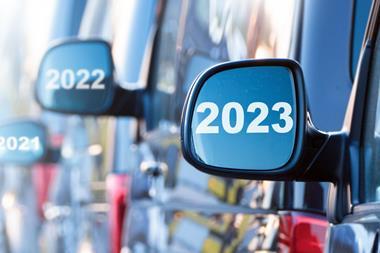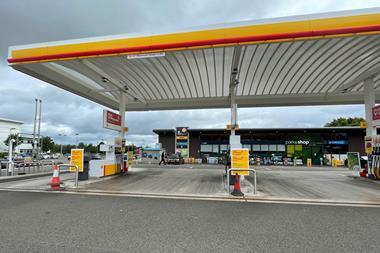New market analysis by HIM, revealed by insight director Gareth Nash, predicts that the growth rate in the convenience sector in 2019 will accelerate, with overall turnover up 3.5% to £41.7bn, compared with a growth rate of 2.7% last year. He said the growth rate had been slowing slightly over the past three years, with competition from the discounters, rising business costs and declining tobacco sales all having an impact. But this year the sector is set for a "strong growth rate" well ahead of the grocery market average.
Nash said the improved performance was down to a combination of rising professionalism, better quality and range of offering, NPD and innovation, and premiumisation in the market. Drilling down into the latest data provided by the Convenience Tracking Programme (CTP), he highlighted some of the key findings. He warned that there had been a move towards other channels by younger shoppers. "Twenty eight per cent of shoppers are aged 16-34 in the convenience market, but that is significantly down from two years ago when they made up a third of all shoppers. There is a real need to engage with this new generation of shoppers. They under-index in convenience stores, but they are more important in terms of impulse shopping and buying into promotional deals. They are also hugely important to food-to-go sales." Nash advised that c-stores needed to engage with young people using social media by putting out messages and news on deals, taking queries from shoppers and answering them.
He said young shoppers were also looking for ease and speed, but ease and speed accounted for two of the three biggest gaps in scores between importance for shoppers versus their scores for satisfaction level. He added: "This shows there is a need for innovation to help fill this gap, particularly for younger shoppers." One example he gave was the trial by Sainsbury’s of smart shop where customers use an app to scan products and pay in the first cashierless store in the UK.
But while technology might have a role to play, he said that for the majority of c-stores the most important driver to visit is their staff. He said CTP found that friendly and helpful staff were the biggest drive to store, adding: "So for most convenience stores staff are still paramount."
Nash said the CTP research found that although a lot of work has already gone into improving provision of fresh food, more needed to be done. He explained: "When we look at what is most important to shoppers the three factors that come out are all about quality of fresh, whether it is meat and fish, fruit and veg, or bread and bakery. But when you look at where satisfaction scores have dropped the most it is the same three factors. Shoppers are getting more demanding."
One area that seems to be fading in the sector is own label, with 82% of baskets containing no own label items, up 4% on 2018. He explained: "Some retailers such as the Co-op have a lot of own label and their average would not be that high, but across the market it is clear there is a big role for brands." He added that in uncertain times, consumers were looking for brands they could trust, as long as those brands remain on-trend and relevant on issues such as health and environmental responsibility.
The report also highlighted that food to go, once one of the strongest parts of the convenience sector’s armoury, was in decline. Although it has increased its share of the convenience sector year-on-year, by 1% to 14%, this contrasted with its peak five years ago when it had a 20% share. Nash said the key driver of this change was the rise in foodservice to go: "It is competing much more strongly so if retailers want to compete in food to go they have to do it well."
Harriet Williams, senior client services manager, emphasised that despite the competition in food to go it still offered convenience retailers a massive opportunity. She suggested two areas that convenience stores should be looking at: breakfast and hot food to go.
She said: "Year-on-year breakfast on the go is growing massively. Breakfast is one of the key areas in eating out that consumers are really flocking to at the moment. People with less time, who don’t have time to make breakfast will buy it on the go." She added: "Hot food to go brings a higher average spend and a higher basket value to your store. People that are buying hot food to go in store have 3.3 items in their basket and they are spending £6.59 in store, which is well up on the average we see in general."
She concluded: "Stay true to the roots of convenience. Don’t just try to emulate foodservice. You have a very specific consumer who is looking for good value and a convenient food-to-go option. Food to go is one of the big opportunities especially to help drive the younger consumer."
Budgens is forecourt favourite
Symbol group Budgens was voted The Shoppers’ Favourite Forecourt Retailer at the HIM Awards 2019.
BP won The Shoppers’ Favourite Food To Go Convenience Retailer, and Shell won The Shoppers’ Favourite Convenience Retailer For Soft Drinks.
Symbol group Premier received the most plaudits, being crowned The Shoppers’ Favourite Convenience Retailer for 2019; in addition to The Shoppers’ Favourite Small Format Retailer and The Shoppers’ Favourite Symbol Group
The Shoppers’ Favourite Convenience Retailer for 2019 sponsored by Juuly Labs, was main award for the evening. This award is based on shopper ratings across all aspects of the store, including availability, ease of shop, range of products and staff friendliness.
The research from HIM showed that Premier have scored consistently highly on the core ratings that are very important to shoppers. These include, 9.57 out of 10 for staff friendliness and helpfulness, 9.37 out of 10 for speed of service and 9.11 for product availability. It is the second year running that Premier won this award





























No comments yet